Affiliate marketing 7-step beginner’s guide
Affiliate marketers earn by promoting other companies' products or services. Learn how to become one.
Affiliate marketing is a method of earning money by recommending products and services online. As an affiliate, you don’t have to make products or sell services. You simply promote them.
Companies benefit from affiliate marketers’ efforts, which increase brand awareness and drive sales. So when leveraged effectively, it’s a mutually beneficial channel—one that’s booming.
In fact, the affiliate marketing industry is valued at more than $18.5 billion.
Marketers who successfully get a slice of the pie do so with a targeted strategy. In this article, we’ll cover how affiliate marketing works, pros and cons, and practical tips to get started.
Affiliate marketing at a glance
As an affiliate marketer, you:
- Promote other businesses’ services or products
- Create content tailored to your affiliate partners’ target audiences
- Share unique affiliate links that track your earnings
- Earn a commission on qualifying sales
It’s a flexible, scalable, and low-cost pursuit. Affiliate sales is accessible to beginners, but it also offers high earning potential.
Getting started is as simple as finding a niche, joining an affiliate program, and creating content.
What is affiliate marketing?
Affiliate marketing is a method of earning money by promoting other companies’ products and services. When your marketing efforts generate sales, you receive a commission.
For example, a marketing consultant might earn a commission by sharing an affiliate link to an SEO software that they recommend.

How do affiliate marketers generate these sales? By:
- Creating content that attracts and informs viewers
- Nurturing an audience interested in their content
- Promoting products through blog posts, social media, and email
- Monitoring performance to improve conversions
- Following consumer trends and product updates
Affiliate marketing isn’t a new channel in the world of online marketing. But it’s become a popular way to make money online due to the ongoing rise of bloggers and social media content creators.
In fact, the industry is projected to grow at a compound annual growth rate of 8.5%, reaching an estimated $35 billion industry valuation by 2033, according to Cognitive Market Research.
How does affiliate marketing work?
Affiliates make money by referring customers or leads to a business. When a customer completes an action (like a purchase or a trial signup) through your unique referral link, you get a commission.
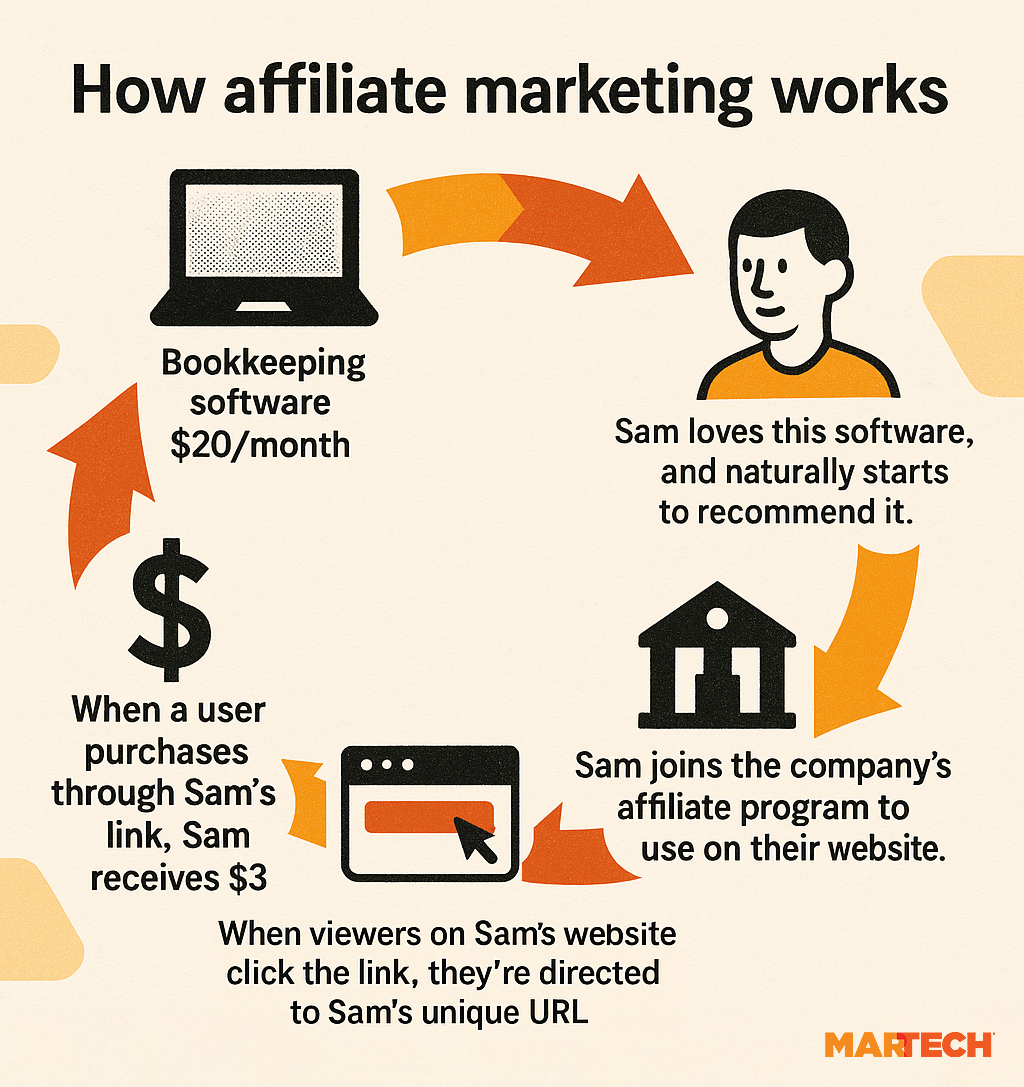
Affiliates promote products or services via their:
- Landing pages and blog posts
- Social media posts
- Email newsletters
- YouTube channels
- Online communities
- Webinars and paid courses
Here’s an example of an affiliate link embedded in a NerdWallet guide:
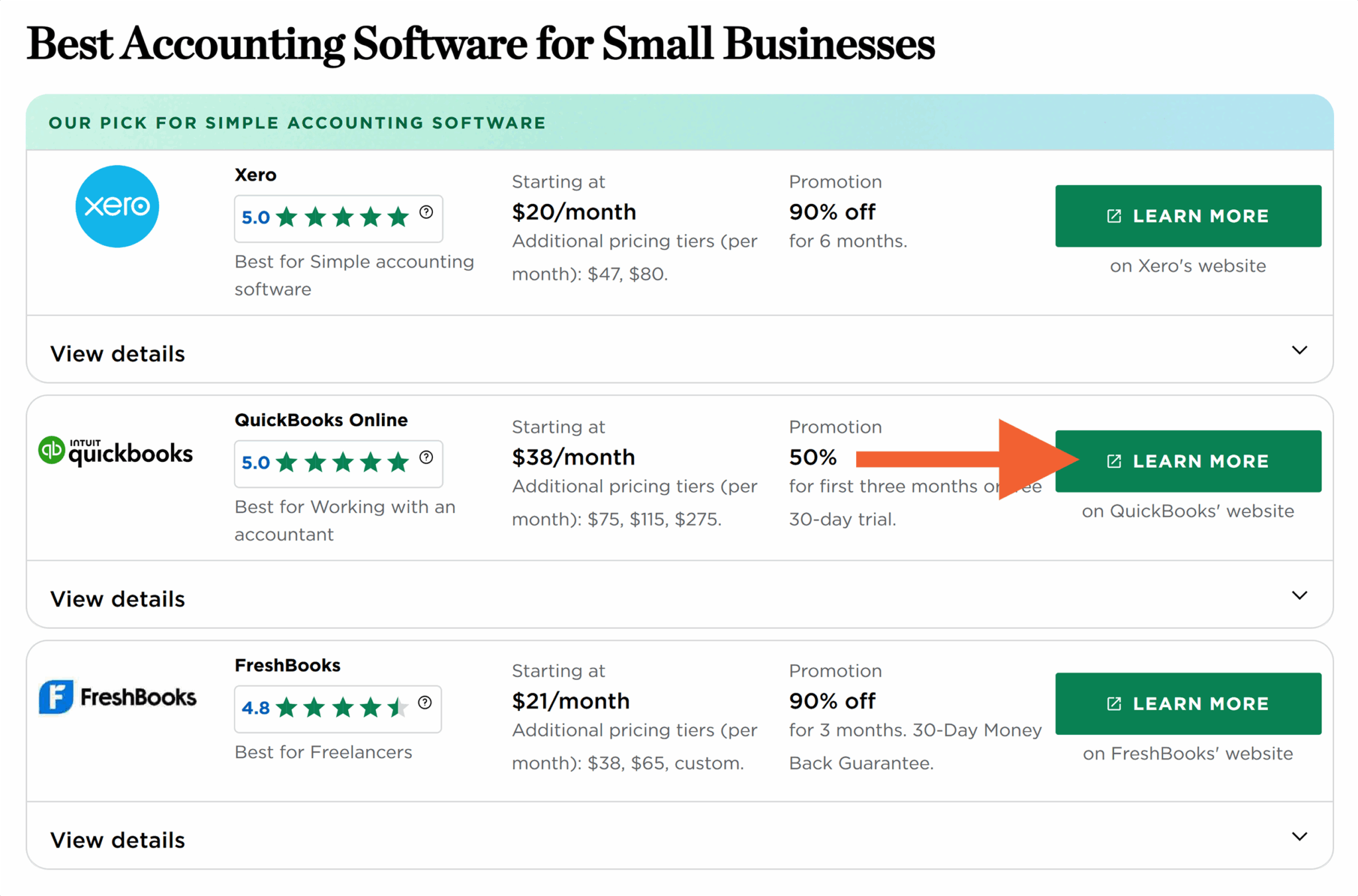
When readers click on the QuickBooks link, they’re redirected to a unique NerdWallet URL.
If they purchase the affiliate product or service within 90 days of clicking on the link, NerdWallet would earn a commission.
How do businesses track affiliate marketing results?
Businesses give affiliates unique referral links. Which include URL parameters with a unique ID.
Like this:

When someone clicks on this link and completes an action (like a purchase) within a specific timeframe, the business credits the affiliate for the sale.
This timeframe is known as the cookie duration. Some of these timeframes are short. For example, Amazon Associates has a cookie duration of 24 hours, with the possibility to extend to 90 days if a customer adds an item to their cart during this window and checks out before the cart expires.
Others, like the Semrush affiliate program, credit affiliates up to 120 days after a referral.

The commission an affiliate receives for each sale depends on the model the business uses and the total amount of the sale.
Types of affiliate marketing models
Businesses typically offer one of these five common affiliate marketing models.

Here’s how they work for affiliates:
- Pay-per-sale: Earn when someone purchases through your link. For example, Amazon Associates affiliates receive compensation for qualifying sales made within the cookie window.
- Recurring: Earn a monthly commission on subscriptions as long as referrals retain their membership. For example, Kit offers affiliates a 50% commission for up to a year. Qualifying affiliates receive recurring monthly commissions after the first year.
- Tiered: Earn a higher commission rate as you refer more customers. For example, Pipedrive affiliates who refer customers consistently for six months get higher commission rates. The revenue share is 20%, and top affiliates get access to custom rates.
- Pay-per-lead: Earn when someone completes a lead-generating action, like signing up for a free trial. For example, Semrush affiliates receive $10 for every free trial signup they generate.
- Pay-per-click: Earn when someone clicks on your unique link. Example: ClickDealer. Affiliates can select offers across relevant verticals to display on their website. When a visitor clicks on a ClickDealer ad, the affiliate is compensated.
What are the benefits of affiliate marketing?
Affiliate marketing can be an accessible, low-risk, and scalable form of online income. Some of the biggest perks include:
- It’s flexible: You can choose your niche, products to promote, and work schedule
- It’s low risk: Your main investments are the time and effort you put into creating content and promoting products
- It offers passive income potential: Once you publish affiliate content, it can continue to generate sales for weeks or months as customers discover and engage with it
- It rewards natural behavior: You can recommend the products you like and receive compensation for it
What are the risks of affiliate marketing?
Affiliate marketing as a sole income source can be risky. Some potential downsides include:
- Program closures: There’s no guarantee a company’s affiliate program will last forever. For example, Airbnb shuttered its program in 2021, ending a major income stream for many travel affiliates.
- Commission changes: Commission rates can decrease at any time, based on the company’s discretion. For example, Amazon Associates updated its operating agreement in 2020, reducing commission rates for some product categories as much as 80%.
- Minimum payout thresholds: Many programs only pay affiliates when they earn a certain amount. To reach minimum payout thresholds affiliates can create dedicated content like reviews and tutorials to target high-intent buyers.
For example, if a FreshBooks affiliate makes $10 per free trial signup with a minimum payment threshold of $50, they have to get credit for five sales before being paid.
In extreme cases, affiliate marketing can create ethical issues. Some examples include:
- Lack of product testing: A 2024 exposé by HouseFresh detailed a surprising lack of transparency in the home goods affiliate space.
- Cookie stuffing: Some affiliates manipulate affiliate cookies to take credit for commissions they didn’t earn. One 2006 case relates to an eBay affiliate marketer. A 2025 lawsuit against PayPal’s Honey browser extension alleges a similar practice.
Your Competitors Are Already Tracking Their AI Search Visibility—Are You?
✓ See exactly where competitors appear in ChatGPT, Perplexity, and Gemini
✓ Compare your AI search share of voice vs. top 5 competitors
✓ Identify AI visibility gaps you can capture this quarter
Built for enterprise martech stacks
Affiliate marketing vs. influencer marketing vs. dropshipping
Affiliate marketing, influencer marketing, and dropshipping are all scalable, low-cost, online business models. But they have a few important differences.
Influencer marketing vs affiliate marketing
Influencer marketing relies on businesses to collaborate with creators, who receive a predetermined amount to promote the brand to their audience. Unlike affiliate marketing, influencer marketing doesn’t depend on commissions.
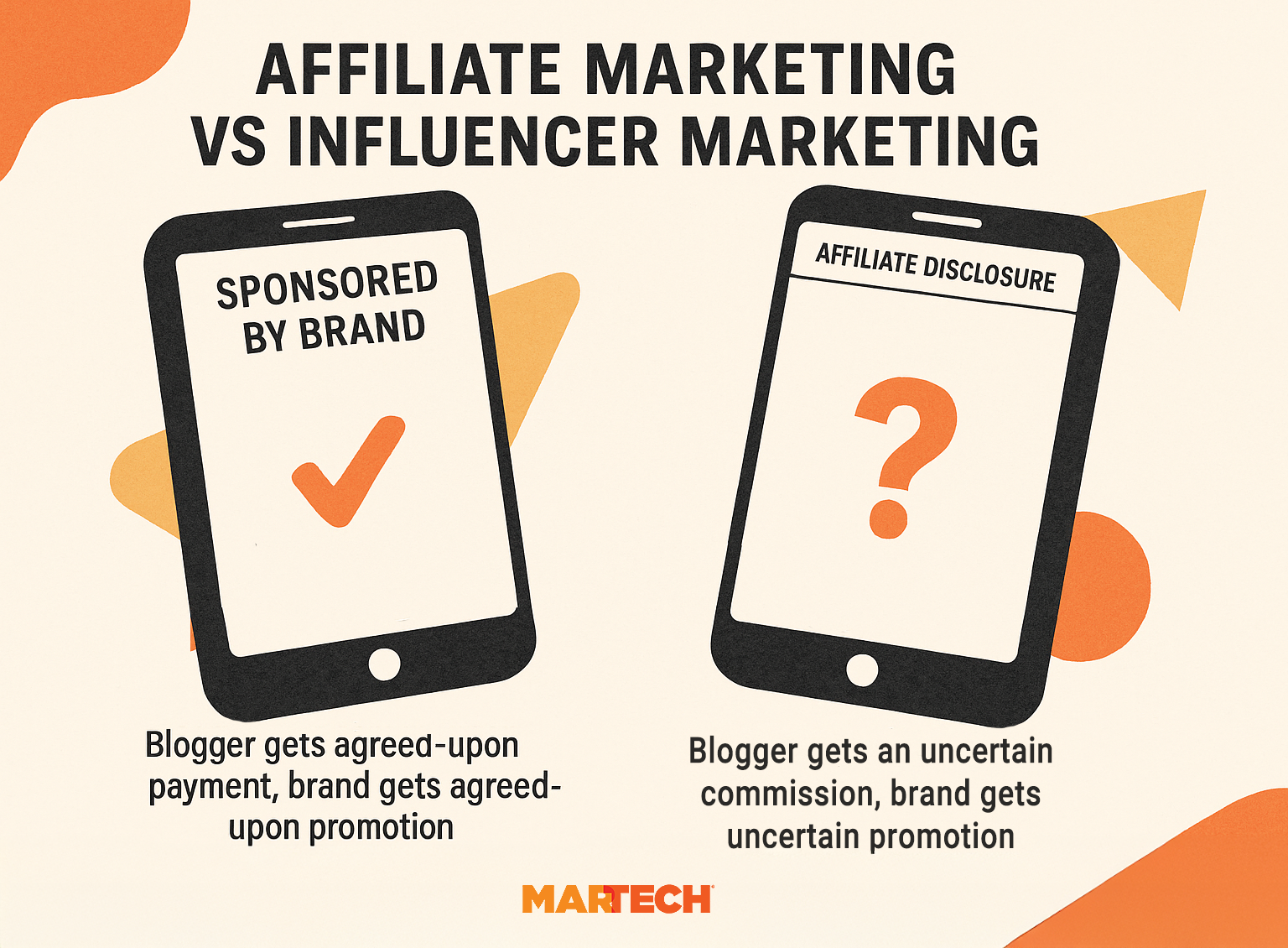
Businesses can run influencer marketing and affiliate marketing programs simultaneously.
| Affiliate | Influencer | |
| Payment | Commission-based, no guaranteed payment | Fixed fee |
| Risk | Affiliates create content without the guarantee of receiving payment | Brands pay for content without the guarantee of conversions |
| Control | Brands have no control over content sentiment or placement | Brands often have to approve content |
Dropshipping vs affiliate marketing
Dropshipping is an ecommerce business model where companies sell products and fulfill orders—but don’t stock products. When a customer places an order, a supplier or manufacturer ships the order directly to the customer.
With a typical net profit margin of 15-20%, the dropshipping model leaves little room to pay affiliates. As a result, companies don’t usually combine dropshipping with affiliate marketing.
How to get started with affiliate marketing in 7 steps
From choosing a niche to creating content to monitoring performance, follow these steps to begin building an affiliate marketing business.
Tip: Sign up for a free Semrush account (no credit card needed) to follow along.
1. Choose a profitable niche
A niche is a specific market segment that includes people who share preferences, interests, needs, and goals.
Your niche determines how much money you can make from affiliate marketing. It should match your area of expertise and have sufficient user interest and profit potential.
According to an Authority Hacker survey of professional affiliate marketers, the niches that report the highest average monthly income are:
- Online learning and education: $15,551
- Travel: $13,847
- Beauty and skincare: $12,476
- Finance: $9,297
- Technology: $7,418
To find the right niche for you, first reflect on your profession or interests. Then confirm that the market presents a profitable opportunity.
Use Semrush’s Market Explorer for this.
Select “Analyze Category,” make a selection from the drop-down menu, and click “Research a market.”
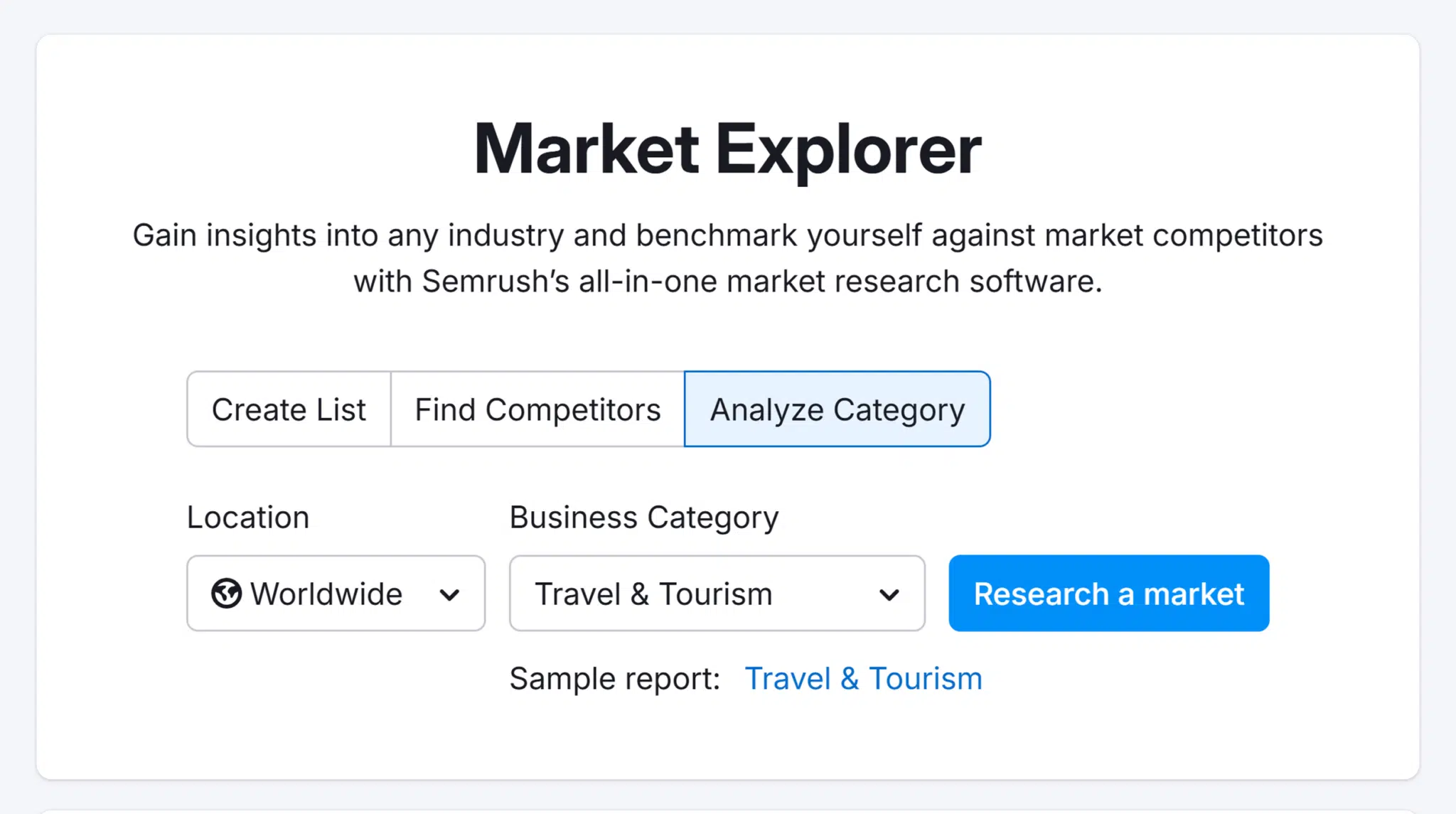
Review the “Service Addressable Market” data to see how many people in the market are actively ready and able to buy. Then, check the “Market Traffic” data to see how many monthly visits the websites in this market typically get.
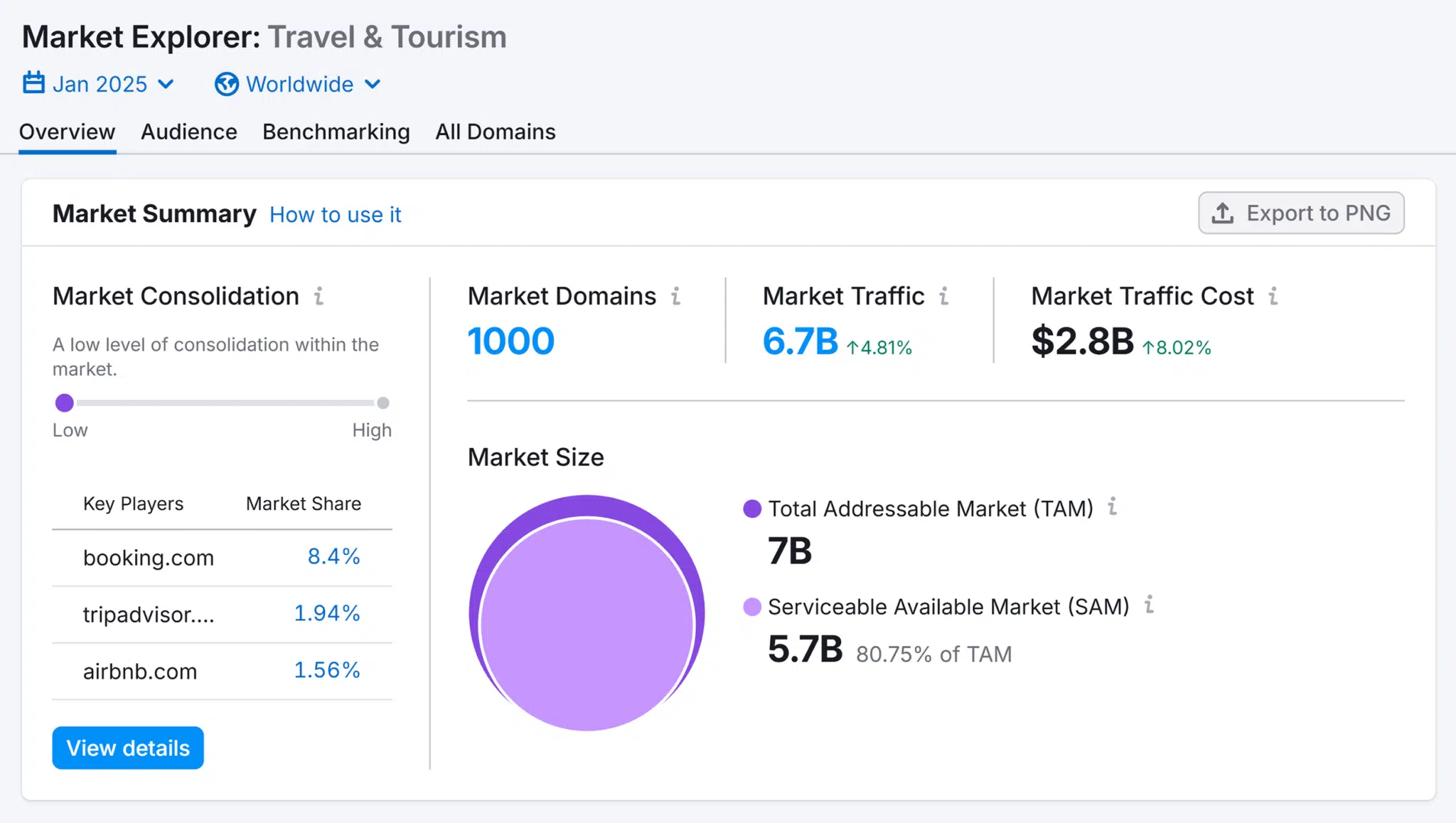
In this case, we can see that this market has a substantial group to target.
From here, look for more focused niches using the Keyword Magic Tool.
Start by entering a broad keyword related to the market you’ve selected and click “Search.”
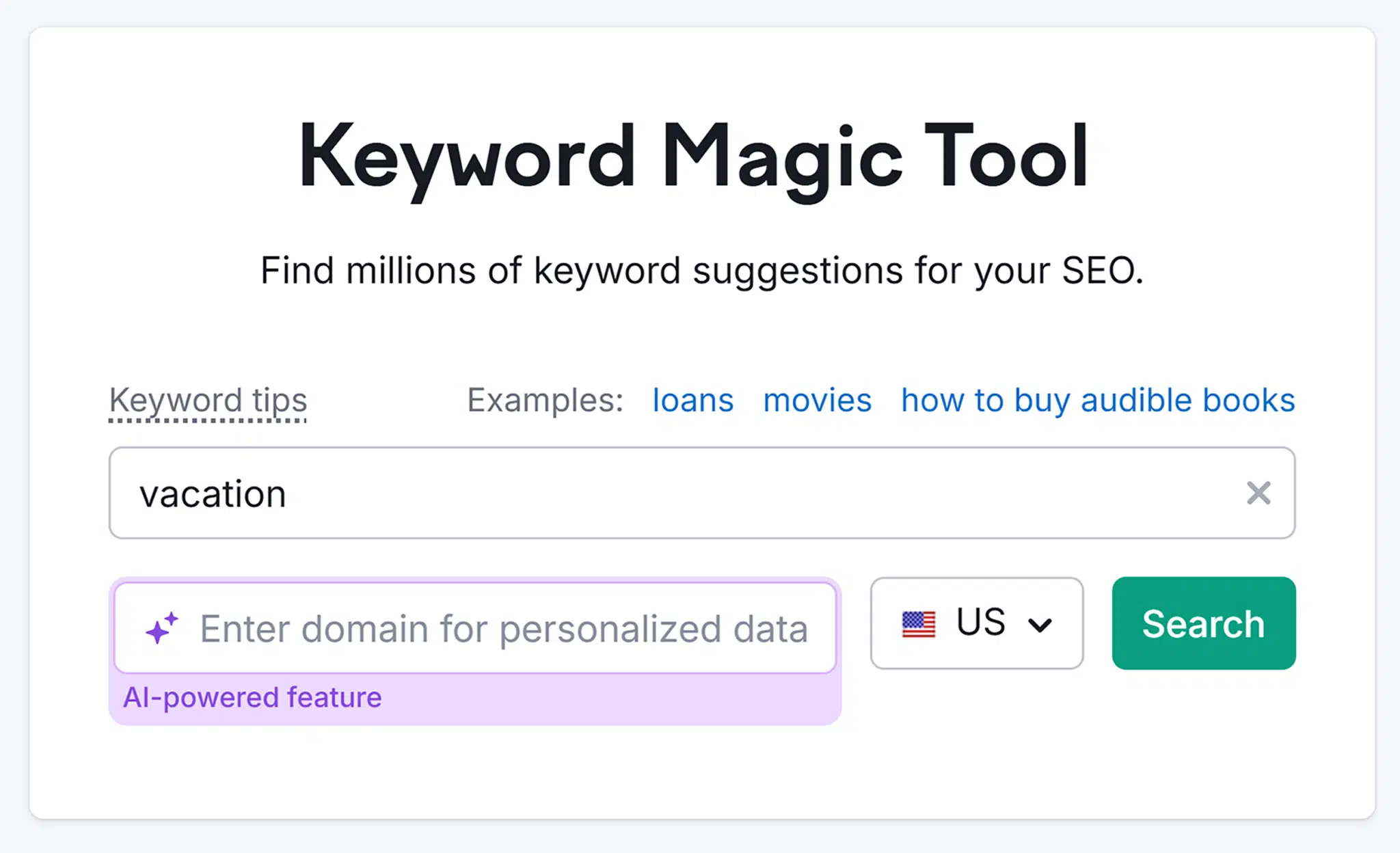
You’ll get a list of related keywords. But look to the keyword groups on the left-hand side and select the “By volume” tab.
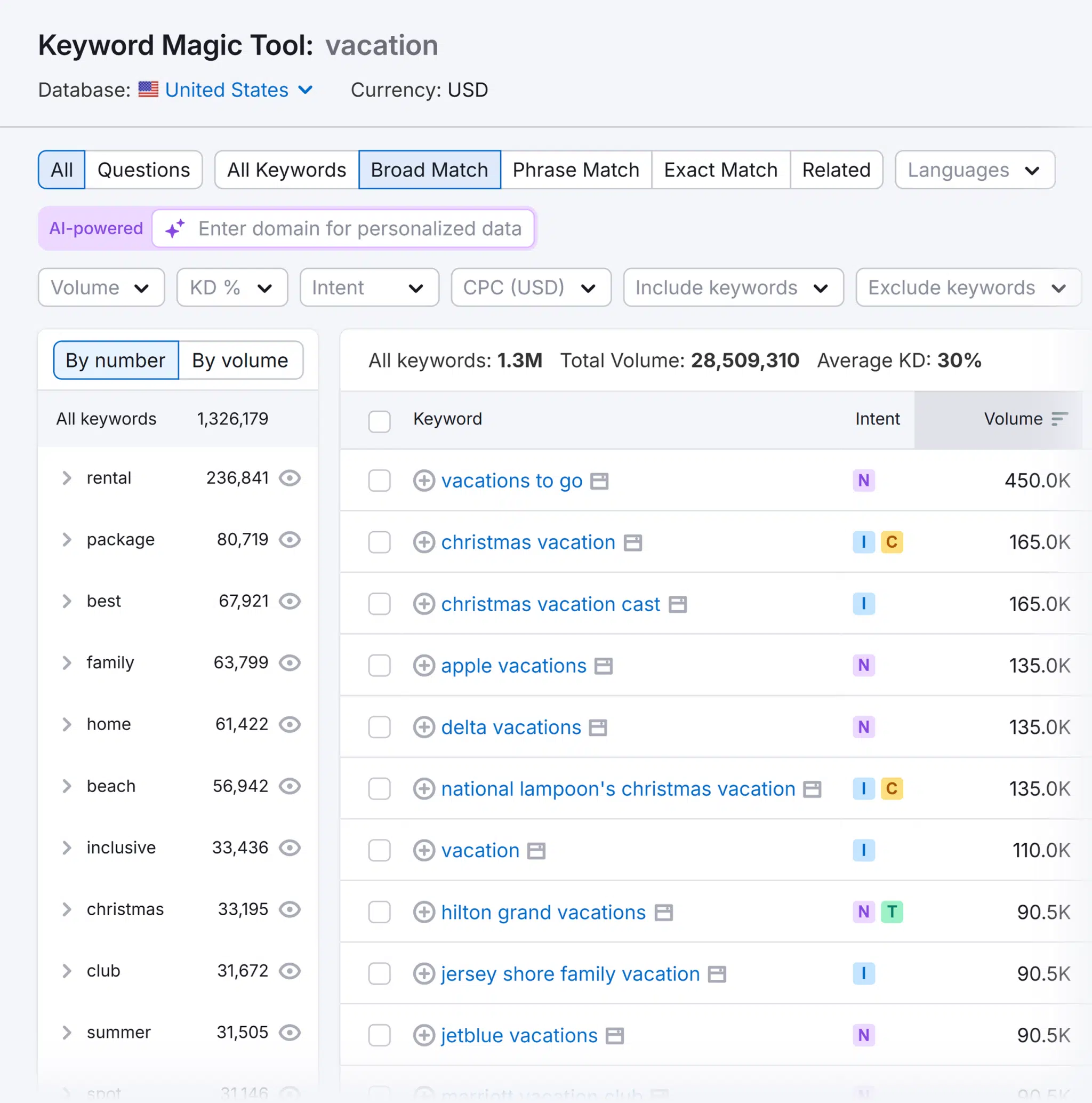
These represent potential niche ideas. And they’re ordered by which ones get the highest number of searches in search engines each month—a good indicator of popularity.
Look for relevant products or services that can be easily monetized. This is key for being a successful affiliate marketer.
2. Research your target audience
Your target audience is the specific group of people most likely to buy what you’re promoting. Understanding them helps you choose the right offerings to promote and content to create.
This can translate to higher conversion rates and earnings.
You can start researching your target audience by analyzing your competitors’ target audiences.
Open One2Target, enter up to five rival domains, and click “Analyze.”
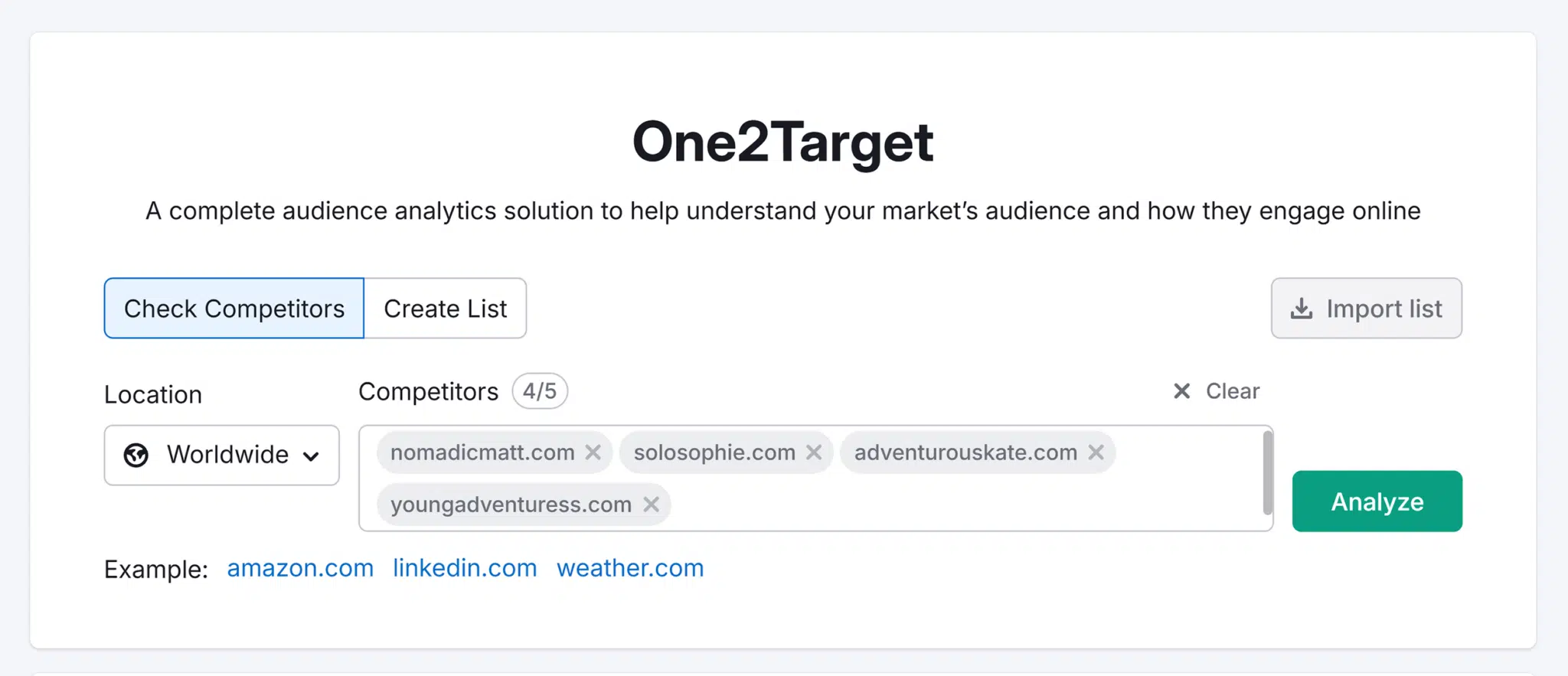
You’ll get a complete overview of their collective audience’s demographics, socioeconomics, and online behavior.
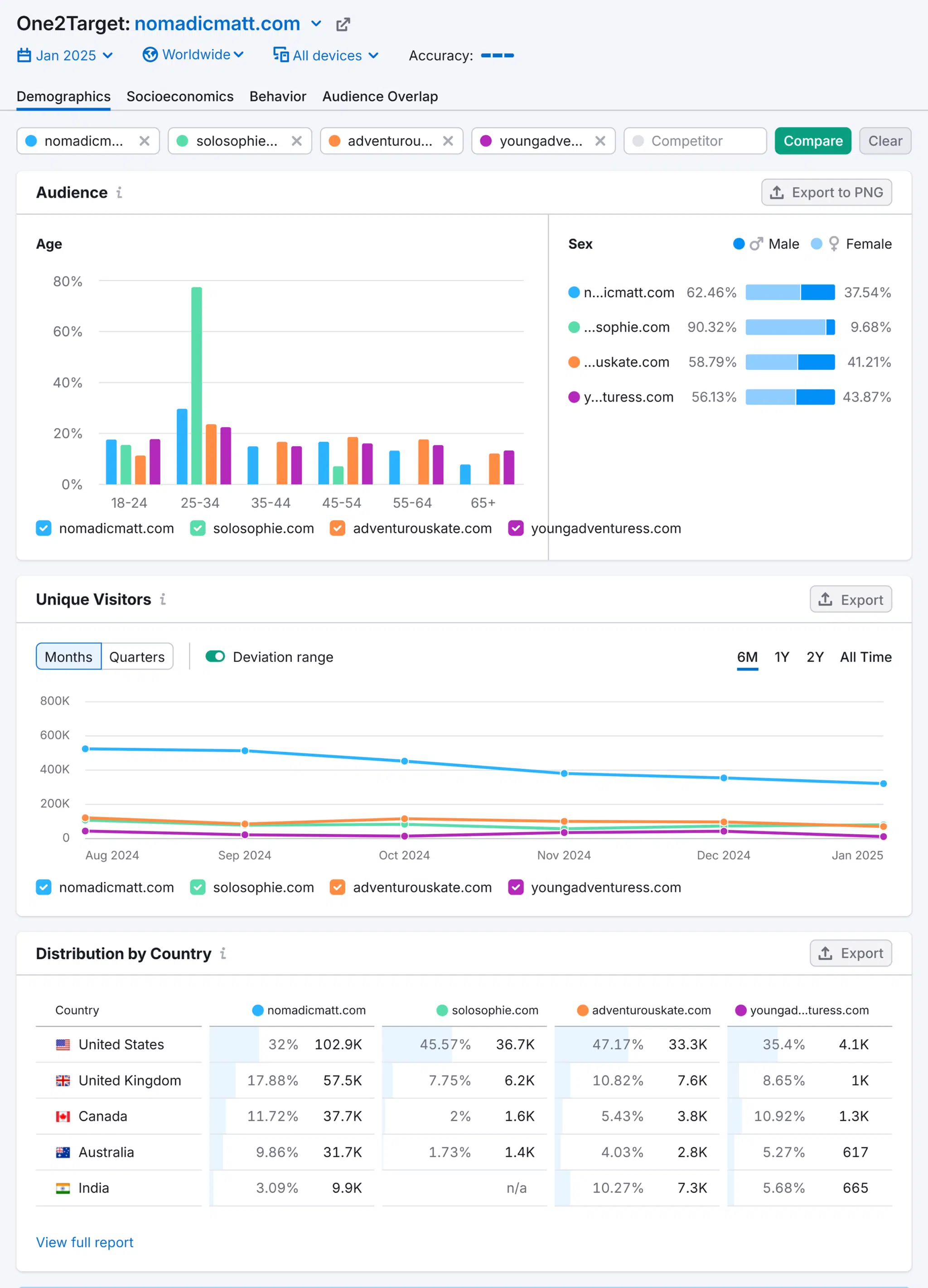
Browse the tabs, analyze the data, and use these insights to define your own target audience.
Say you’re in the marketing niche and your target audience is small business owners in the US, UK, and Canada who want to learn and implement SEO on their websites.
You can use that information to come up with topic ideas, select relevant affiliate programs, and create content that promotes those products. Like this example from SEO consultant Kate Smoothy that promotes Semrush’s Keyword Magic Tool:
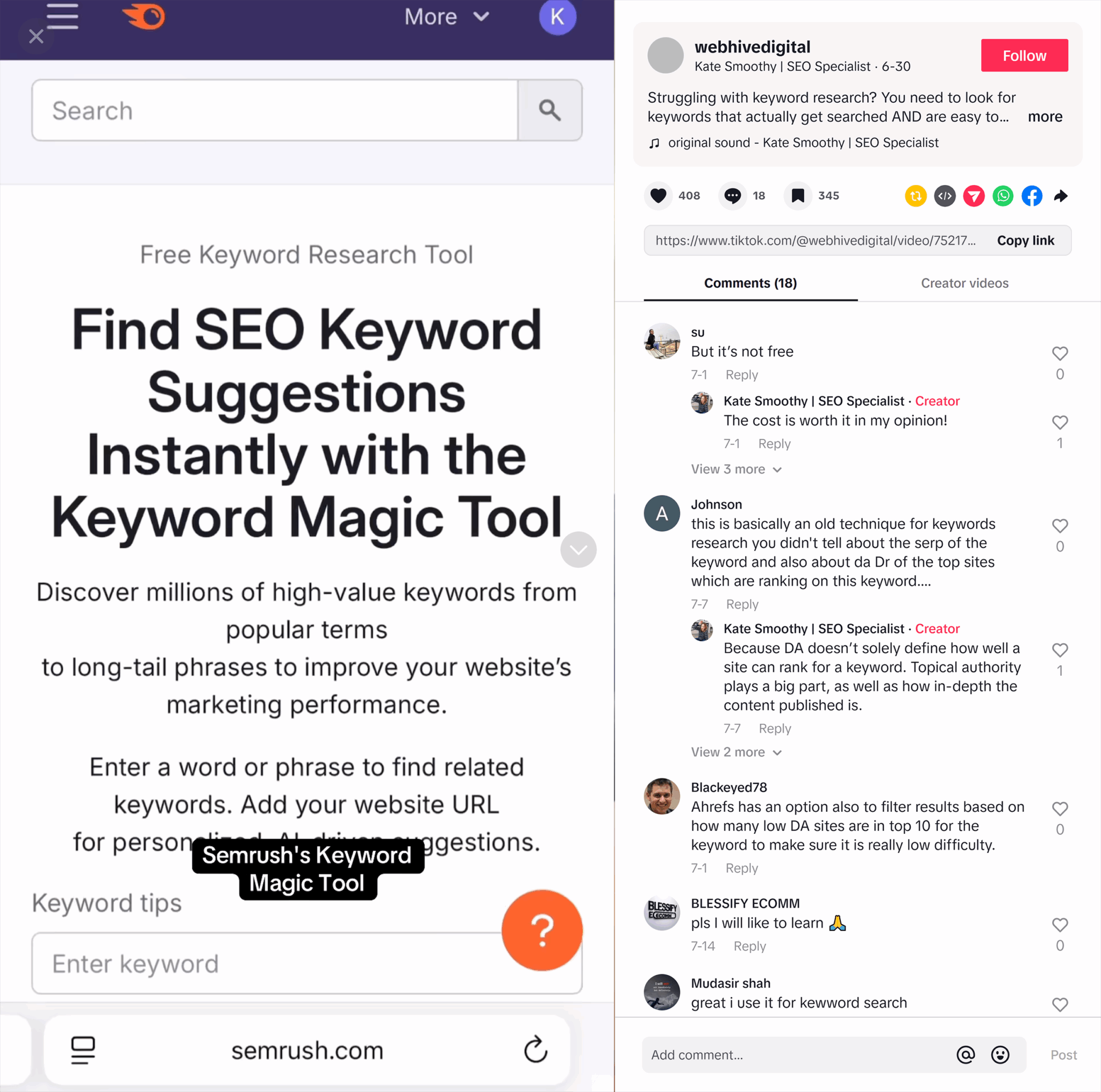
3. Build your platform
Affiliates need a place to share their referral links—like a blog, Facebook page, or YouTube channel.
The platform or channel you choose should align with your niche. And it should be a destination where your target audience already spends time.
Here are some popular marketing channels to consider:
- Blogs: Ideal for in-depth product reviews and comparisons. Works well for finance, business, and tech.
- Facebook: Perfect for helpful, visual content, like tutorials and easily implemented tips. Well-suited parenting, organization, and hobbies.
- YouTube: Great for visual demonstrations. Works well for beauty, gaming, and DIY.
- Instagram: Suits visually-driven niches like fashion, design, and travel.
- TikTok: Best for quick tips and trends. Fits well with fitness, wellness, and entertainment.
- Pinterest: Excellent for visual inspiration. Ideal for home decor, crafting, and cooking.
- Podcasts: Great for long-form discussions. Suits self-improvement, entrepreneurship, and education niches.
- Email: A direct lifeline to your most engaged audience members. Works for all niches.
Not every channel has the same conversion rates. Here are the average conversion rates by channel, according to Refgrow:
- YouTube: 2-5%
- Email marketing: 2%
- Podcasts: 1-3%
- Niche websites: 0.5-1%
- Social media: 0.5-1%
If you’re not sure where your audience spends time, revisit behavioral data in One2Target to see what your audience prefers.
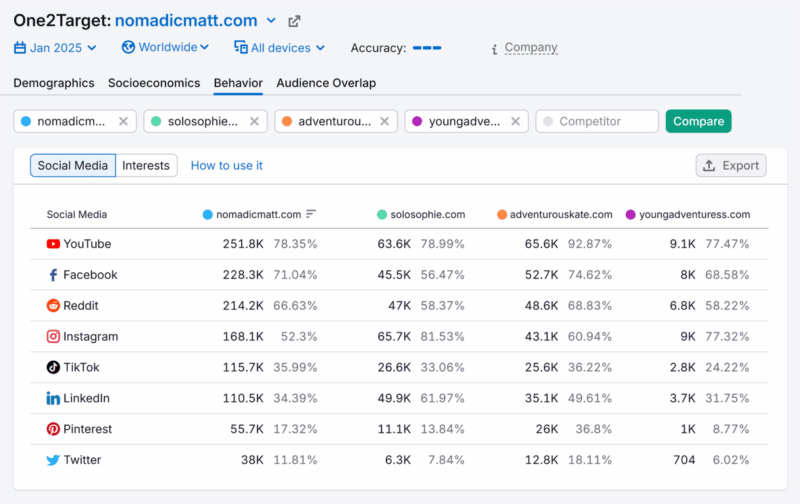
4. Join affiliate programs
Affiliate programs and networks provide the structure and payment systems you need to earn money through referrals. They typically have built-in affiliate marketing tools that make it easy to measure performance.
An affiliate program is a partnership between a single company and its affiliates. An affiliate network is an ecosystem that connects affiliates with multiple businesses.
Some popular affiliate programs and networks include:
- Amazon Associates: Good for a wide range of products
- Rakuten Marketing: Best for retail and ecommerce
- ShareASale: Fitting for many niches, including fashion and home goods
- CJ Affiliate: Suitable for tech and finance niches
- ClickBank: Perfect for digital products and online courses
- Awin: Excellent for European markets
- eBay Partner Network: For auction-based products
Pro tip: Start with one program that aligns with your niche. Focus your efforts on getting over the program’s minimum earnings threshold so you can earn your first payment.
5. Create quality content
Quality content is clear, valuable, and actionable. It solves problems, answers questions, and helps your audience make informed decisions. Over time, it builds trust and authority.
High-quality affiliate content typically includes honest product reviews and recommendations, helpful tutorials, and practical use cases.
Here are a few tips for creating great affiliate content for any niche:
- Know your audience: Research their pain points and needs
- Do your homework: Test products yourself over a sustained period of time
- Be specific: Use concrete examples and data to back up your claims
- Show—don’t tell: Include screenshots, videos, or step-by-step tutorials
- Update regularly: Keep your content fresh with the latest product information and industry trends
- Disclose appropriately: Tell viewers when you’re sharing affiliate links. Follow all Federal Trade Commission (FTC) disclosure rules. Like this NerdWallet example:

If you’re writing long-form content to promote products and services, use the SEO Writing Assistant. This tool analyzes your writing in real time, providing tips on readability, originality, tone of voice, and SEO.
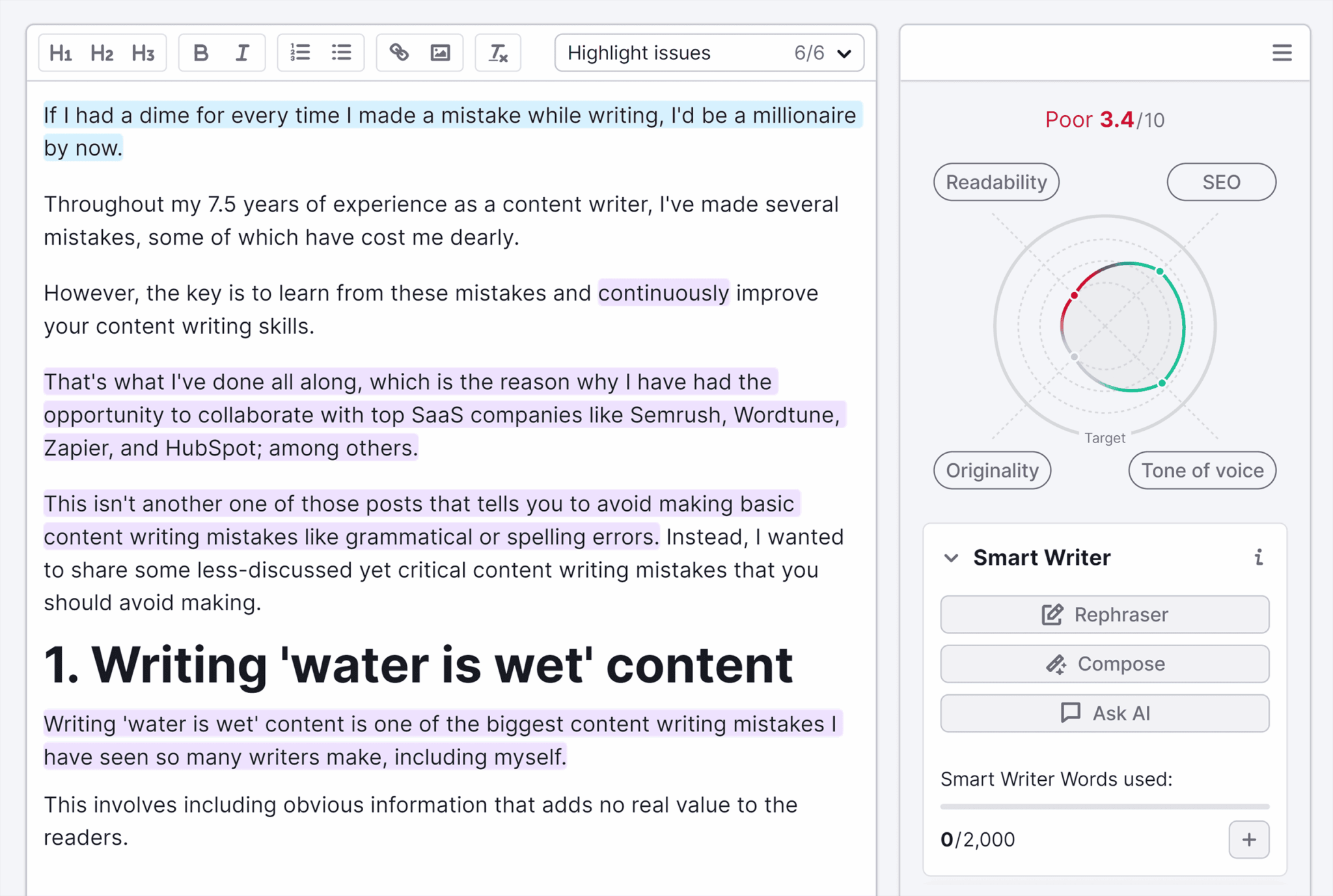
It also integrates with Google Docs, WordPress, and Microsoft Word to help you analyze and improve your content wherever you write.
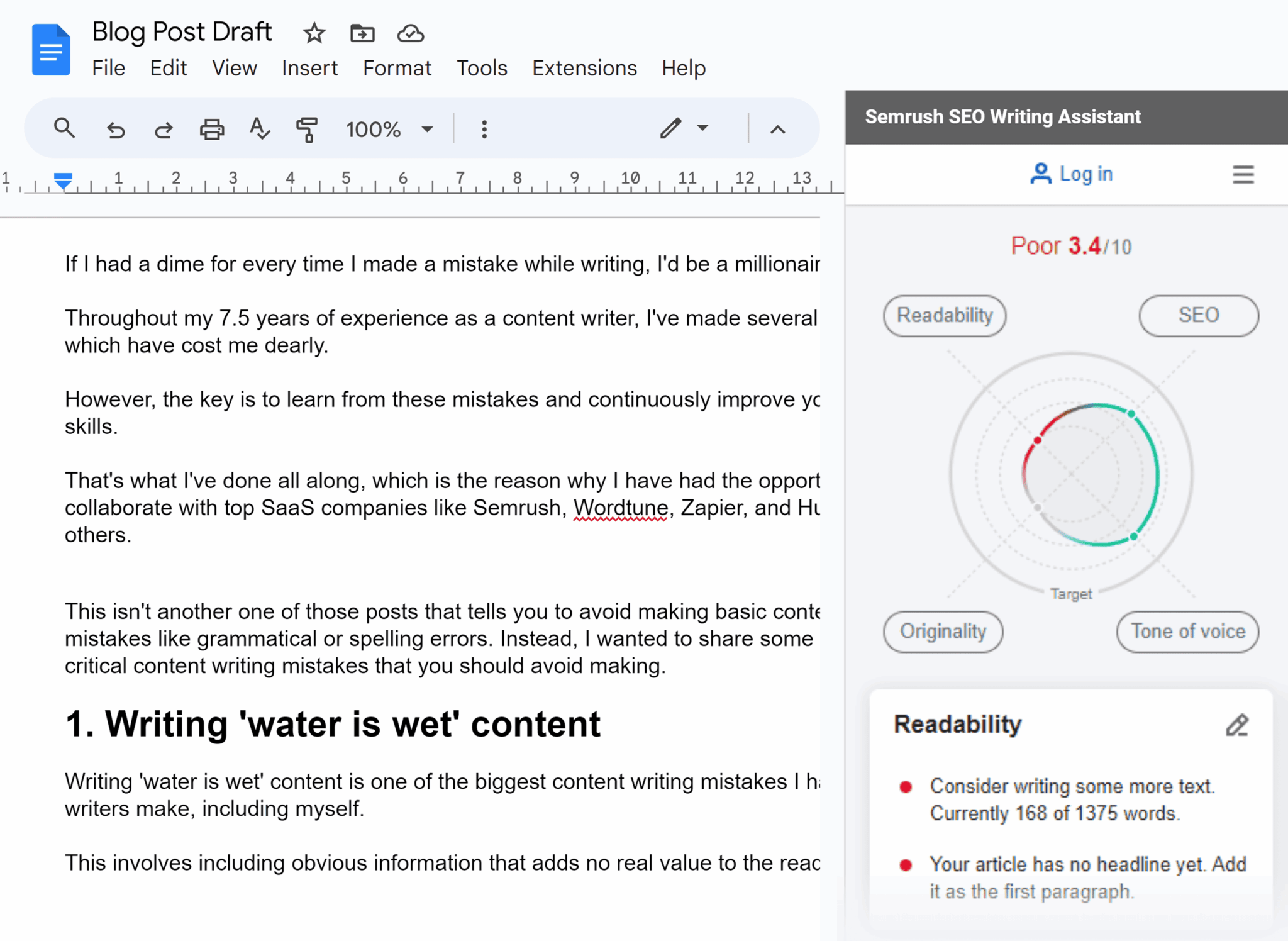
6. Drive traffic to your platform(s)
To earn commissions, you need potential customers to see your content. Which means you need to get people to visit your website or social media profiles.
The main ways to drive traffic to your platform include:
- Social media: Use social media SEO tactics like on keywords in content, alt text, video captions, and hashtags
- Organic: Optimize your content for SEO to rank higher in organic search and drive unpaid traffic from search engines
- Paid: Create ad campaigns to drive traffic from paid content on platforms like Google or Facebook
- Referral: Build relationships with website owners for backlinks (links on their sites that point to your site) to attract visitors from related sites
- Social: Share valuable content and engage with your social media followers regularly
- Email: Build a subscriber list and send them targeted campaigns and exclusive content
Consider diversifying your traffic sources based on what you learn about where your audience spends time.
And no matter which platforms or channels you choose, always create high-quality, relevant, and up-to-date material that resonates with your audience. And encourages them to take action.
7. Monitor performance and refine your strategy
Tracking your affiliate marketing performance shows you what’s working (and what’s not). And scaling affiliate earnings requires an understanding of what’s generating commissions.
Go beyond the metrics that determine your commissions. Take a strategic approach by tracking more holistic metrics. Like website conversion rates, social media engagement rates, and click-through rates (CTRs).
Note: The exact metrics you’ll track depend on your main platform and your promotion tactics.
Then, use this data to refine your strategy. For example:
- Low blog conversion rate? Try answering FAQs about the product more thoroughly.
- Low video engagement? Try an explainer video or a product demo for people who are discovering the product for the first time.
- Low email CTRs? Try incentivizing clicks by sharing time-sensitive offers.
For example, an affiliate for a social media scheduler could incentivize email subscribers by offering a live beginner tutorial.
Small changes can lead to big gains. So, keep testing and refining to boost your results.
Can you make a living as an affiliate marketer?
Professional affiliate marketers earn an average of roughly $8,000 per month, according to Authority Hacker. The data shows that experience matters:
- Professional affiliate marketers with 10+ years of experience (7.4% of respondents) reported earning more than $44,000 per month.
- Those with one to two years of experience (65.1% of respondents) reported earning an average of $4,196 a month.
What to know about affiliate earning potential
Factors like niche, customer spend, and audience size directly impact how much you can earn with affiliate marketing.
Affiliate commissions range from 1% to more than 50%, depending on the niche. Digital products like software often have higher rates—like Kit, which pays 50% commissions. Certain physical products, like groceries and personal care items on Amazon, have 1% commissions.
Commission potential typically increases with larger average order values (AOVs). Affiliates can also see their rates scale on tiered affiliate models. For example, a Pipedrive affiliate’s rate can increase from 20% to 30% if they make two to five sales per month for six months straight.
The larger your audience, the more impressions you can get when you publish affiliate content. While a larger audience doesn’t guarantee more sales, it does create more opportunities for potential sales.
How to compare affiliate programs
To choose affiliate programs with the best earning potential, look critically at these factors:
- Commissions: What is the commission model? How much do affiliates earn for each sale, click, or lead?
- Reviews: Are customers generally happy with the affiliate product or service? Are affiliates generally satisfied with the program? Gauge this through reviews on Google and Trustpilot.
- Support and community: Does the company have a dedicated team to support the affiliate program? Are there private groups or training sessions for affiliates?
- Cookie duration: How quickly do people have to purchase or sign up for a free trial after they click your link?
How long does it take to make money with affiliate marketing?
New affiliate marketers have the potential to start making money within their first month. It’s easier to begin earning faster if you already have an audience with an interest in the products you’re promoting.
Beginners who want to earn quickly can focus on programs with low payment thresholds and recurring payments. Even if conversions are low, earnings accumulate month by month.
Factors to consider as you scale your income:
Affiliate marketers who have three or more years of experience earn 9.45x more than beginners, according to Authority Hacker data. Expect a learning curve, and focus on honing your skills.
As professional affiliate marketers gain experience, they tend to choose products based on trends more than commission rates and personal experience, according to Authority Hacker. Look for overlap between your knowledge and current trends.
Affiliate marketers report that getting traffic is their top challenge, as Authority Hacker data shows. Learning SEO, building an engaged social media following, and staying up to date on algorithm changes can help you overcome this challenge and drive traffic.
Email marketing traffic trumps social media for seasoned affiliate marketers, Authority Hacker research indicates. By building an email list early on, you can position yourself to earn more later.
While most affiliate marketers are solopreneurs, those who earn six figures per year typically have six or more team members, according to Authority Hacker. As you grow, consider which areas would be productive to outsource.
Helpful affiliate marketing tools
These tools help affiliate marketers create content and measure the return on their efforts.
Pretty Links
Pretty Links is a WordPress plugin for creating short, branded affiliate links. With Pretty Links, you can replace affiliate links that have long UTM parameters with your own custom link.
Like this:
https://yourdomain.com/product
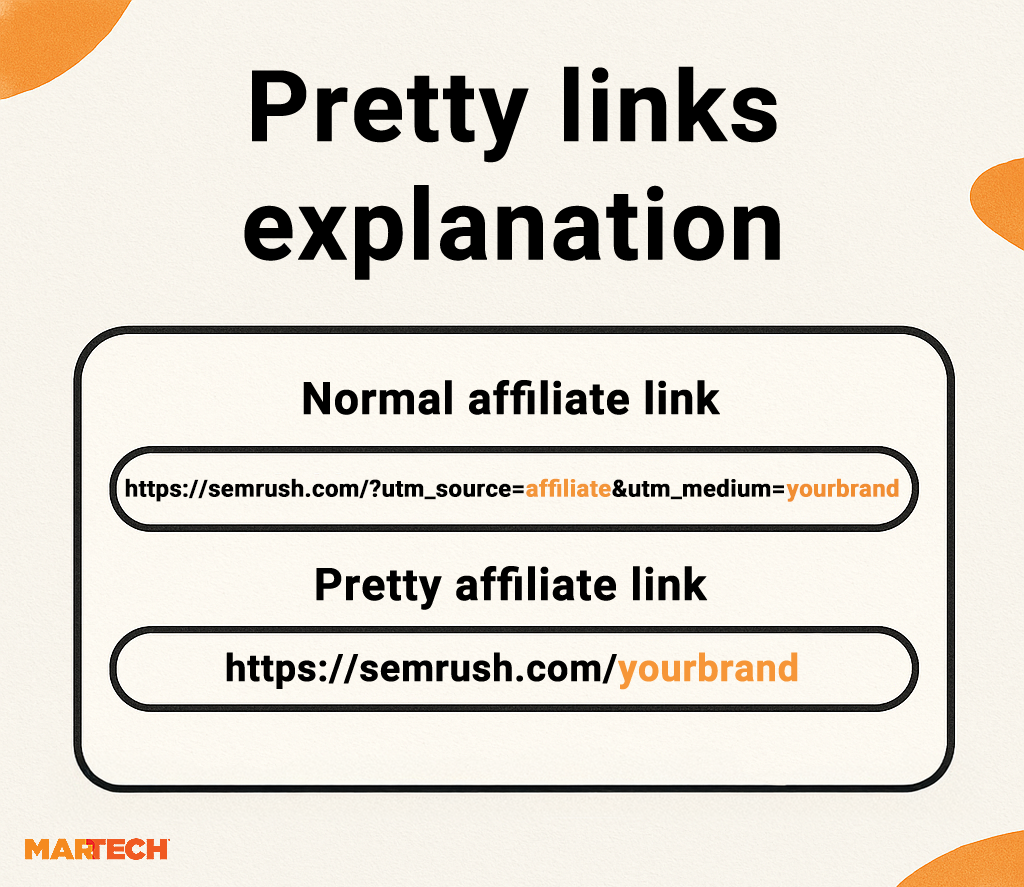
Pretty Links can also:
- Insert affiliate links automatically where you mention relevant products on your website
- Create custom redirects based on geographic location or device.
- Add engaging inline displays with affiliate product images and specs.
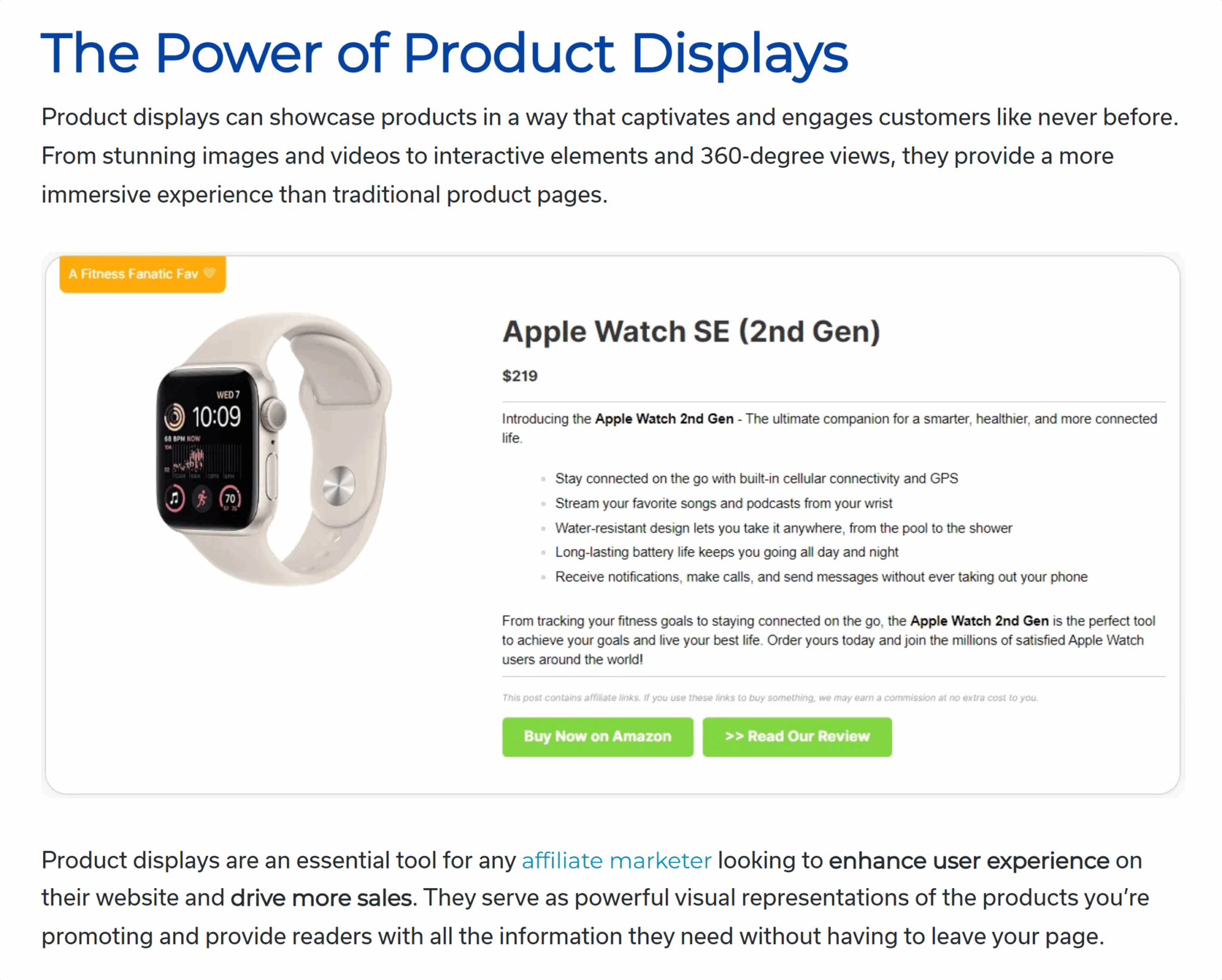
Linktree
Linktree lets you add multiple links to their social media profiles. Many affiliate marketers use this tool to create social media landing pages with links to their most recommended products, reviews, or email signup pages.
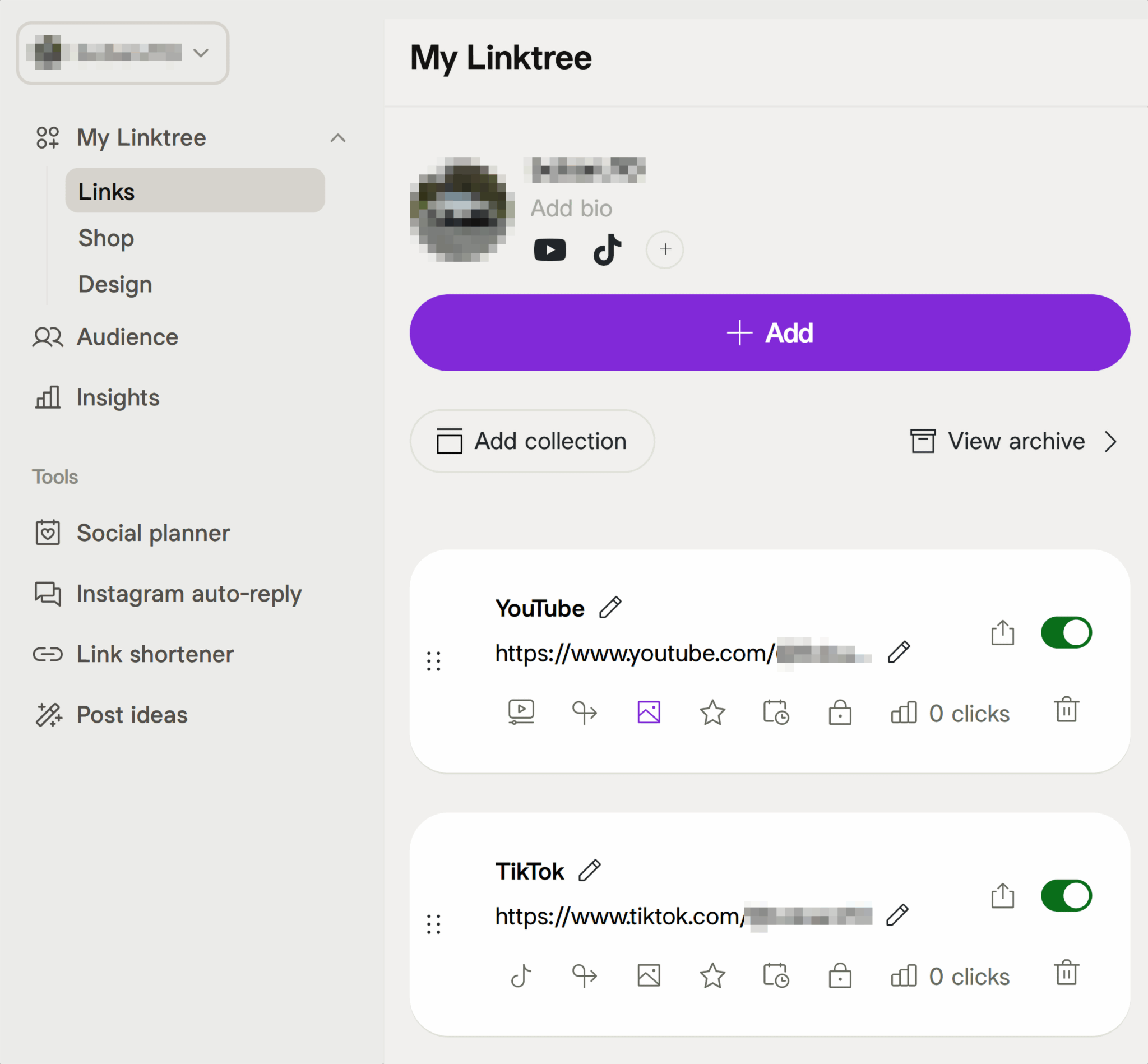
The platform also offers built-in affiliate income opportunities.
To view them, go to the admin dashboard. Click “My Linktree” and then select “Links.”
Click the “+ Add” button to add links to your profile. Then, scroll to the bottom of the pop-up and view “New to try.”
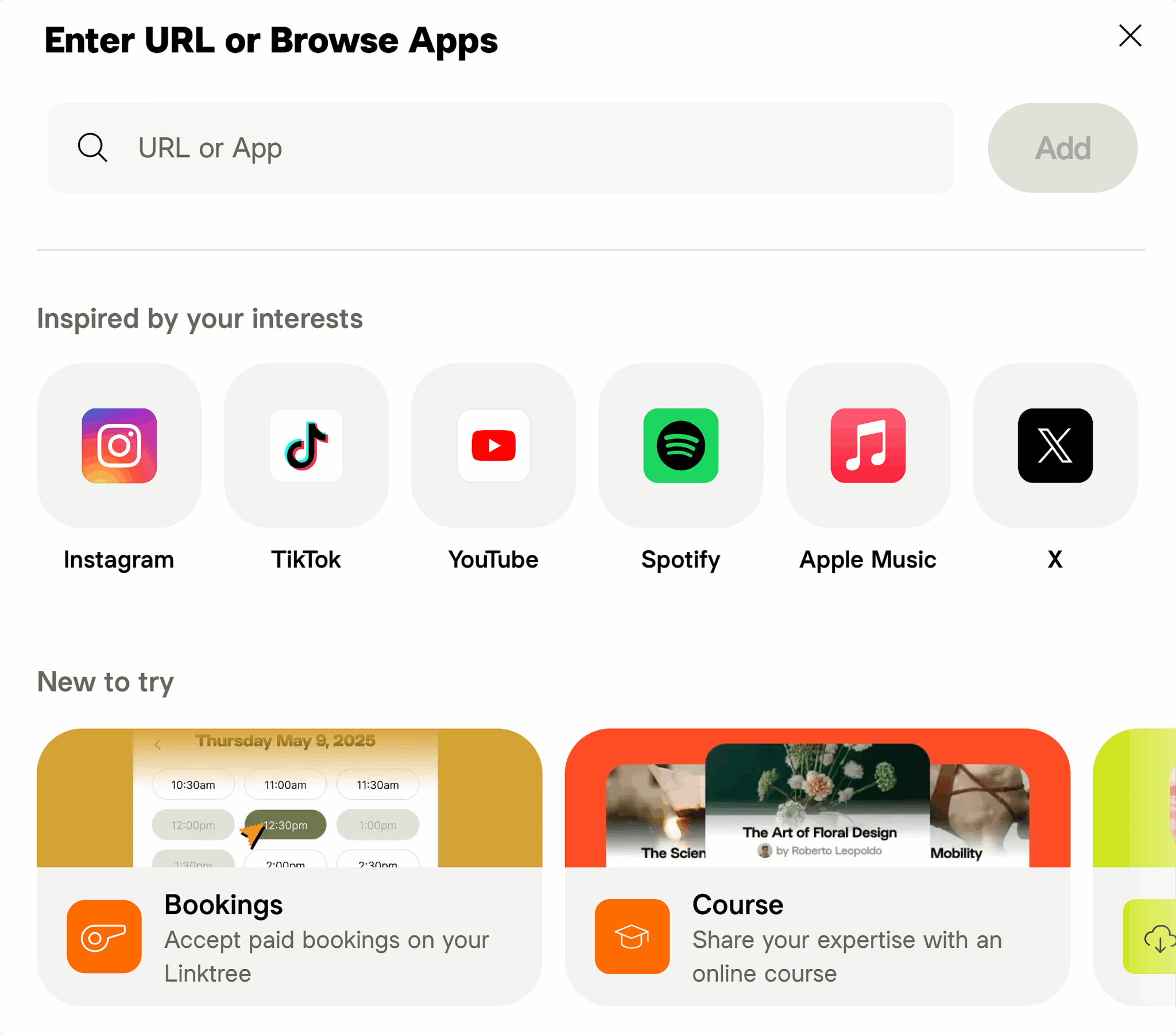
AnswerThePublic
AnswerThePublic reveals the questions people are asking about a product. This can help you uncover a plethora of content creation opportunities.
For every search, AnswerThePublic lets users narrow results by selecting Google, Bing, YouTube, TikTok, Amazon, and Instagram. Enter the brand or product you’re an affiliate for, and then hit “Search.”
For a Google search, the results are sorted by:
- Questions
- People Also Ask (PAA)
- Propositions
- Comparisons
- Alphabeticals
- Numbers
- Related
The “Comparisons” tab is particularly powerful for affiliates. This indicates high-intent shopping, like “Brand A versus Brand B.” Which indicates strong purchase intent from searchers.
For example, here you can see 41 comparison results for Teachable:
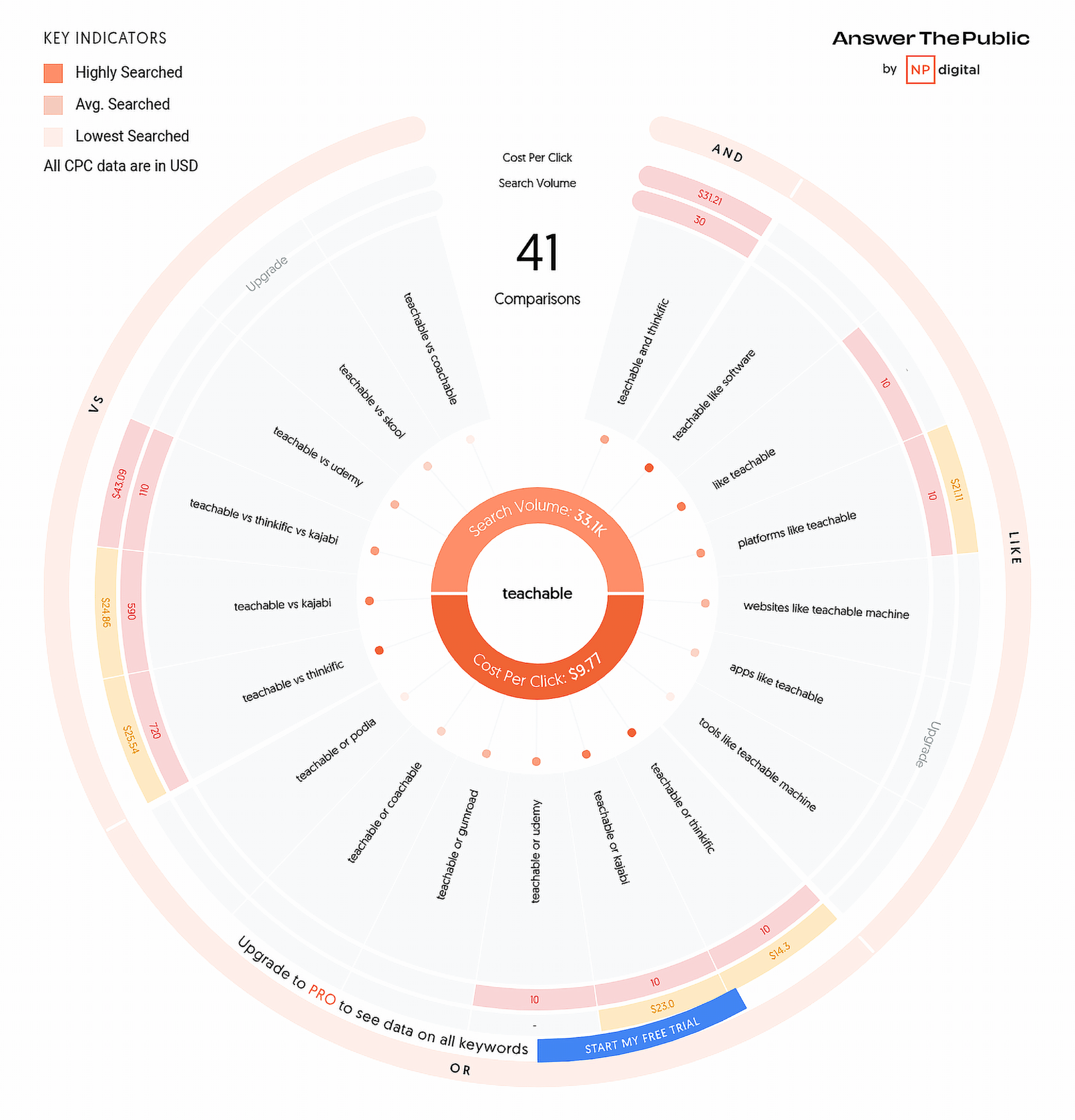
Using this information, you can identify key competitors. Then, you can create detailed guides comparing product strengths and weaknesses.
ChatGPT
Affiliate marketers can use ChatGPT for target audience research and content ideas.
Here’s a prompt to try:
I’m a new affiliate marketer for [brand]. You are a professional affiliate marketer guiding me through the creation of an effective content plan that I can start implementing today.
One by one, ask me questions about my target market, audience, content creation abilities, and time availability. From my answers, create a polished plan with a schedule for execution.

Instead of using ChatGPT for basic content ideas, this assigns the tool a specific role and asks it to ask you for information. This is an example of a flipped interaction prompt, and it generates more targeted, unique outputs.
Here’s an example of a new affiliate schedule that ChatGPT produced after working through this prompt:
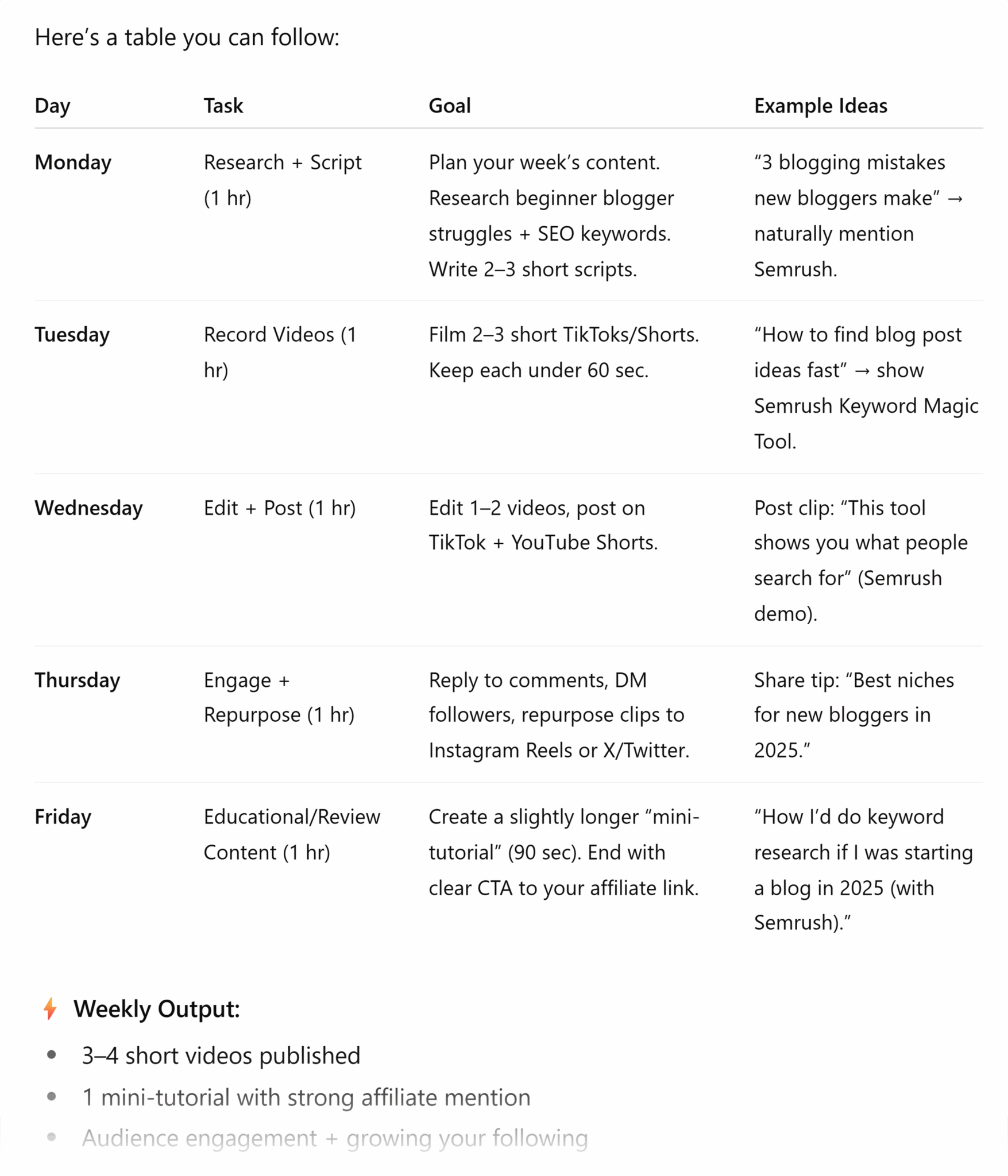
Use this customized schedule to create content that aligns with your affiliate marketing goals.
Semrush
Semrush can uncover content topics that users are searching for related to the products you sell.
With Keyword Overview, you can research keywords related to the product you’re promoting:
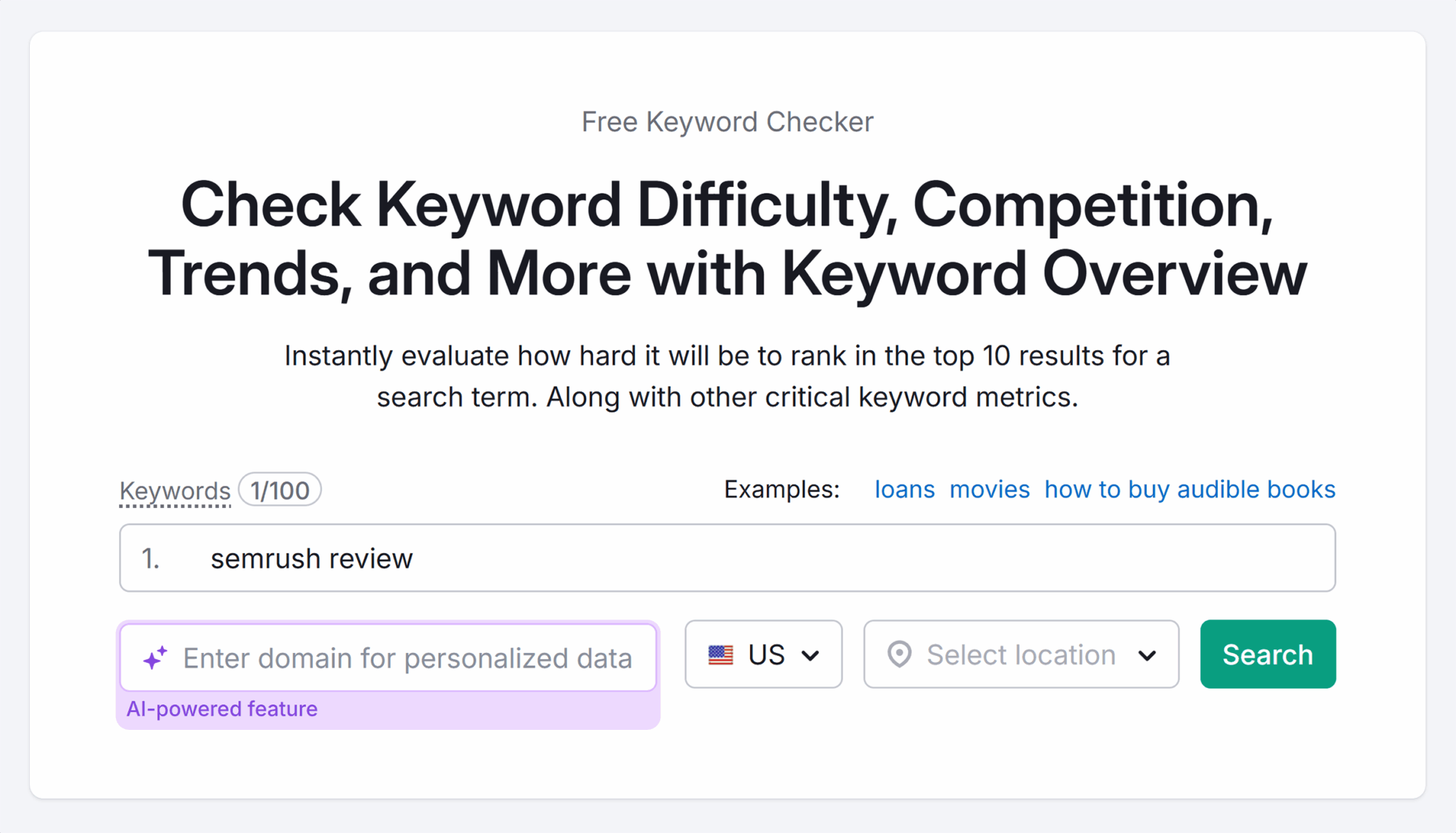
Hit “Search” and then view the results in the Keyword Overview dashboard. Look at the “Intent” panel to see if your keyword has commercial intent:

Commercial intent is ideal for affiliate content. It signals that users are looking to make a purchase. Which would make this keyword a good choice for affiliate content.
Take the first step to become an affiliate marketer
Jumping into affiliate marketing is simpler than you might expect.
The key is to start with a niche you’re passionate about.
Not sure where to begin?
Use Market Explorer to find niches with good potential. Then, start creating content and promoting products or services.
For more information on how affiliate marketing has changed (and trends to try), check out our guide on the new approach to affiliate marketing.